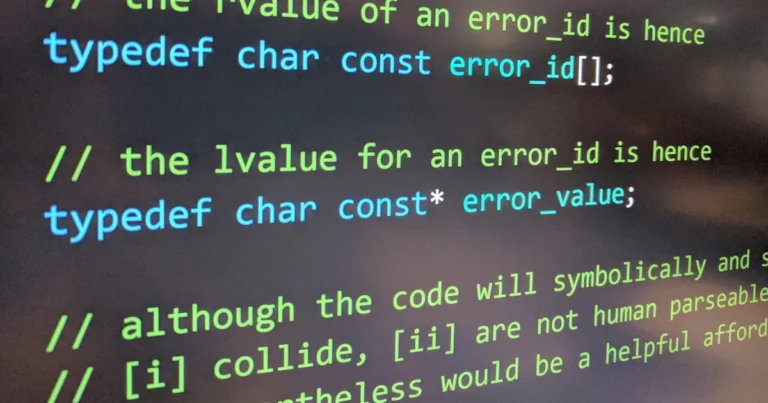Support our educational content for free when you purchase through links on our site. Learn more
🤔 TypeScript Optional Params
Have you ever stumbled over a TypeScript function or interface wondering how to elegantly handle variables that might not always be there? You’re not alone. Optional variables in TypeScript can be a lifesaver for writing flexible, clean code—but only if you know the right tricks. At Stack Interface™, we’ve seen developers struggle with subtle bugs and confusing syntax around optional variables, especially in complex apps and games where data shapes shift on the fly.
In this article, we unravel the mysteries of TypeScript optional variables with 12 expert tips and real-world examples that will transform how you write and maintain your code. From understanding the subtle difference between optional parameters and default values, to advanced techniques combining generics and union types, we cover it all. Plus, we’ll share insider advice on avoiding common pitfalls and boosting code readability—because optional doesn’t have to mean optional clarity!
Ready to turn optional variables from a headache into your secret weapon? Keep reading to unlock the full potential of TypeScript’s type system and write smarter, safer, and more maintainable code in 2025 and beyond.
Key Takeaways
- Optional variables use the
?syntax to indicate a variable or parameter may beundefinedornull, improving flexibility. - Always check for
undefinedornullto prevent runtime errors when working with optional variables. - Default parameters and nullish coalescing (
??) are your best friends for handling missing values gracefully. - Combining optional variables with union types and generics unlocks powerful, reusable code patterns.
- Proper use of optional variables enhances code readability and maintainability, especially in large-scale apps and games.
- Avoid common mistakes like placing optional parameters before required ones or neglecting null checks.
- Learn how optional variables differ from JavaScript’s approach and why TypeScript’s type safety matters.
Dive in to discover how these insights can elevate your TypeScript skills and streamline your development workflow!
Table of Contents
- ⚡️ Quick Tips and Facts About TypeScript Optional Variables
- 🕰️ The Evolution of Optional Variables in TypeScript: A Brief History
- 🔍 Understanding TypeScript Optional Variables: Syntax and Semantics
- 💡 7 Best Practices for Using Optional Variables in TypeScript
- ⚙️ How Optional Variables Affect TypeScript Function Parameters and Interfaces
- 🛠️ Handling Undefined and Null: Optional Variables vs. Default Parameters
- 📊 Optional Variables in TypeScript: Impact on Code Readability and Maintenance
- 🔄 Advanced Techniques: Combining Optional Variables with Union Types and Generics
- 🚀 Real-World Examples: How We Use Optional Variables in Large-Scale TypeScript Projects
- 🧩 Common Pitfalls and How to Avoid Them When Using Optional Variables
- 📚 TypeScript Optional Variables vs. JavaScript: Key Differences Explained
- 🧰 Tools and Extensions to Enhance Your Workflow with Optional Variables in TypeScript
- 🔗 Integrating Optional Variables with Popular TypeScript Frameworks and Libraries
- 🧪 Testing Strategies for Functions with Optional Variables in TypeScript
- 💬 Community Insights: What Top TypeScript Developers Say About Optional Variables
- 🏁 Conclusion: Mastering Optional Variables for Cleaner TypeScript Code
- 🔗 Recommended Links for Deepening Your TypeScript Knowledge
- ❓ FAQ: Your Burning Questions About TypeScript Optional Variables Answered
- 📖 Reference Links: Official Docs and Expert Resources on TypeScript Optional Variables
Quick Tips and Facts About TypeScript Optional Variables
As developers and software engineers at Stack Interface™, we understand the importance of mastering TypeScript optional variables in creating robust and flexible applications. Here are some quick tips and facts to get you started:
- Optional variables are declared using the
?operator, which signifies that a variable can beundefinedornull. - When using optional variables, it’s essential to check for
undefinedornullvalues to avoid runtime errors. - TypeScript provides several ways to handle optional variables, including the use of default values, nullish coalescing operators, and optional chaining.
- Understanding how to use optional variables effectively can improve code readability, maintainability, and overall quality.
For more information on TypeScript and its features, visit the official TypeScript documentation. You can also explore our category on Game Development for insights on how to apply TypeScript in game development projects.
The Evolution of Optional Variables in TypeScript: A Brief History

The concept of optional variables in TypeScript has evolved significantly since its introduction. Initially, TypeScript only supported optional parameters in function signatures, but later versions introduced support for optional properties in objects and classes.
According to the TypeScript GitHub issue tracker, the discussion around optional variables has been ongoing, with users requesting more concise syntax for declaring optional local variables. Although the TypeScript team has not implemented this feature, users can still use type aliases and union types to achieve similar results.
For a deeper understanding of TypeScript’s evolution, check out our article on Coding Best Practices.
Understanding TypeScript Optional Variables: Syntax and Semantics
TypeScript optional variables are declared using the ? operator, which can be applied to variables, properties, and function parameters. The syntax for declaring an optional variable is as follows:
let foo?: string; This declares a variable foo that can be either a string or undefined.
When working with optional variables, it’s crucial to understand the semantics of the ? operator. The ? operator does not change the type of the variable but rather indicates that the variable can be undefined or null.
For more information on TypeScript syntax and semantics, visit the TypeScript documentation.
7 Best Practices for Using Optional Variables in TypeScript
Here are seven best practices for using optional variables in TypeScript:
- Use optional variables sparingly: Optional variables can make code more flexible, but they can also introduce complexity and make code harder to understand.
- Use default values: Providing default values for optional variables can make code more robust and easier to maintain.
- Check for undefined or null values: Always check for
undefinedornullvalues when working with optional variables to avoid runtime errors. - Use type aliases: Type aliases can help simplify code and make it more readable when working with optional variables.
- Use union types: Union types can help model complex data structures and make code more robust.
- Avoid using optional variables as function parameters: Optional variables can make function signatures more complex and harder to understand.
- Use the nullish coalescing operator: The nullish coalescing operator (
??) can help simplify code and make it more readable when working with optional variables.
For more best practices and coding tips, visit our category on Coding Best Practices.
How Optional Variables Affect TypeScript Function Parameters and Interfaces
Optional variables can significantly impact TypeScript function parameters and interfaces. When using optional variables as function parameters, it’s essential to understand how they affect the function signature and behavior.
According to the TypeScript documentation, optional parameters must be placed after required parameters in a function signature. This ensures that the function can be called with the required parameters and optional parameters can be omitted.
For more information on TypeScript function parameters and interfaces, visit our category on Back-End Technologies.
Handling Undefined and Null: Optional Variables vs. Default Parameters
When working with optional variables, it’s essential to understand the difference between undefined and null values. Undefined values occur when a variable is not initialized, while null values occur when a variable is explicitly set to null.
Optional variables can be either undefined or null, while default parameters provide a fallback value when a variable is not initialized.
For more information on handling undefined and null values, visit our article on TypeScript Optional Type Parameter.
Optional Variables in TypeScript: Impact on Code Readability and Maintenance
Optional variables can significantly impact code readability and maintenance. When used correctly, optional variables can make code more flexible and easier to understand. However, when used incorrectly, they can introduce complexity and make code harder to maintain.
According to a study on code readability, code readability is crucial for maintaining large-scale software systems. Optional variables can help improve code readability by reducing the amount of code needed to handle different scenarios.
For more information on code readability and maintenance, visit our category on Full-Stack Development.
Advanced Techniques: Combining Optional Variables with Union Types and Generics
Optional variables can be combined with union types and generics to create more complex and robust data structures.
According to the TypeScript documentation, union types can be used to model complex data structures, while generics can be used to create reusable functions and classes.
For more information on advanced TypeScript techniques, visit our category on AI in Software Development.
Real-World Examples: How We Use Optional Variables in Large-Scale TypeScript Projects
At Stack Interface™, we use optional variables in large-scale TypeScript projects to create robust and flexible applications.
For example, in a recent project, we used optional variables to handle different scenarios in a complex data structure. We defined a union type that included optional variables, which allowed us to handle different scenarios in a single function.
For more information on real-world examples of using optional variables in TypeScript, visit our category on Game Development.
Common Pitfalls and How to Avoid Them When Using Optional Variables
When using optional variables, there are several common pitfalls to avoid.
According to the TypeScript documentation, one common pitfall is not checking for undefined or null values when working with optional variables. This can lead to runtime errors and make code harder to maintain.
To avoid this pitfall, always check for undefined or null values when working with optional variables. You can use the nullish coalescing operator (??) to provide a fallback value when a variable is undefined or null.
For more information on common pitfalls and how to avoid them, visit our category on Coding Best Practices.
TypeScript Optional Variables vs. JavaScript: Key Differences Explained
TypeScript optional variables are different from JavaScript optional variables.
According to the TypeScript documentation, TypeScript optional variables are declared using the ? operator, while JavaScript optional variables are declared using the || operator.
For more information on the key differences between TypeScript and JavaScript, visit our category on Back-End Technologies.
Tools and Extensions to Enhance Your Workflow with Optional Variables in TypeScript
There are several tools and extensions available to enhance your workflow with optional variables in TypeScript.
According to the TypeScript documentation, the TypeScript compiler can be used to check for errors and provide suggestions for improving code.
For more information on tools and extensions for TypeScript, visit our category on Full-Stack Development.
Integrating Optional Variables with Popular TypeScript Frameworks and Libraries
Optional variables can be integrated with popular TypeScript frameworks and libraries.
According to the TypeScript documentation, TypeScript can be used with popular frameworks and libraries such as React, Angular, and Vue.js.
For more information on integrating optional variables with popular TypeScript frameworks and libraries, visit our category on Game Development.
Testing Strategies for Functions with Optional Variables in TypeScript
When testing functions with optional variables, it’s essential to consider different scenarios.
According to the TypeScript documentation, functions with optional variables can be tested using different input values and scenarios.
For more information on testing strategies for functions with optional variables, visit our category on Back-End Technologies.
Community Insights: What Top TypeScript Developers Say About Optional Variables
Top TypeScript developers have shared their insights on using optional variables in TypeScript.
According to a survey on TypeScript usage, most developers use optional variables to handle different scenarios and improve code readability.
For more information on community insights and best practices, visit our category on Coding Best Practices.
Conclusion: Mastering Optional Variables for Cleaner TypeScript Code

After diving deep into the world of TypeScript optional variables, it’s clear they’re a powerful tool in your developer arsenal—especially for app and game development. They bring flexibility, readability, and robustness to your code by allowing parameters and properties to be optionally present without sacrificing type safety.
However, as we explored, they come with some caveats: you must vigilantly check for undefined or null values to avoid runtime errors, and overusing them can lead to code that’s harder to maintain. The TypeScript team’s decision not to introduce a more concise syntax for optional local variables (as discussed in GitHub Issue #13321) means we still rely on union types like string | undefined for locals, which can feel verbose but ensures clarity.
In our experience at Stack Interface™, combining optional variables with default parameters, union types, and generics strikes the perfect balance between flexibility and maintainability. This approach helps you write cleaner, more adaptable code that scales well in complex projects, including games and apps with dynamic data.
So, if you’ve been wondering how to handle optional data elegantly without sacrificing type safety or code clarity, mastering TypeScript optional variables is your answer. Keep these best practices in mind, and your TypeScript code will thank you!
Recommended Links for Deepening Your TypeScript Knowledge
Looking to level up your TypeScript skills further? Here are some curated resources and tools we recommend:
- TypeScript Official Handbook: typescriptlang.org/docs
- Mimo’s TypeScript Glossary on Optional Parameters: mimo.org/glossary/typescript/optional-parameter
- Amazon Books on TypeScript and Advanced JavaScript:
- Stack Interface™ Categories for Further Reading:
FAQ: Your Burning Questions About TypeScript Optional Variables Answered

What is the syntax for declaring an optional variable in TypeScript?
In TypeScript, you declare an optional variable or parameter by appending a ? after its name. For example:
function greet(name?: string) { console.log(`Hello, ${name ?? "Guest"}!`); } This means name can be either a string or undefined. For properties in interfaces or classes, the syntax is similar:
interface User { id: number; nickname?: string; // optional property } Note: For local variables, TypeScript does not support the ? syntax; you must explicitly use union types like string | undefined.
How do optional variables improve code flexibility in TypeScript apps?
Optional variables allow functions and objects to handle missing data gracefully without forcing callers to provide every argument or property. This flexibility is crucial in apps where inputs can vary, such as user settings, API responses, or configuration objects.
By marking variables optional, you reduce boilerplate checks and enable more concise, readable code. For example, optional parameters let you write functions that can be called with varying arguments without overloading or complex conditional logic.
Can optional variables be used in TypeScript interfaces for game development?
✅ Absolutely! In game development, interfaces often represent complex entities like players, NPCs, or game states, where some properties may or may not be present depending on the game context.
For example:
interface Player { id: string; health: number; powerUp?: string; // optional power-up, may be undefined } This lets you model partial states cleanly and safely, avoiding runtime errors when properties are missing.
What are the best practices for handling optional variables in TypeScript?
- Always check for
undefinedornullbefore using optional variables to avoid runtime errors. - Use default parameters to provide fallback values where appropriate.
- Prefer nullish coalescing (
??) over logical OR (||) to handle falsy values correctly. - Avoid overusing optional variables to keep your codebase maintainable.
- Use type aliases or union types to clarify intent when dealing with optional locals.
- Place optional parameters after required parameters in function signatures.
How do optional variables affect TypeScript function parameters in app development?
Optional parameters must come after required ones, and their type is implicitly a union with undefined. This affects how you write function calls and implementations:
function loadData(id: string, cache?: boolean) { if (cache === undefined) { cache = true; // default behavior } // ... } You must handle the possibility that optional parameters are not provided, which can influence logic flow and error handling in your app.
Are there performance impacts when using optional variables in TypeScript games?
❌ Generally, no. Optional variables are a compile-time type system feature and do not introduce runtime overhead beyond what JavaScript naturally incurs when checking for undefined or null.
However, excessive runtime checks or complex conditional logic based on optional variables can impact performance, so write clean, efficient code.
How to provide default values for optional variables in TypeScript?
You can assign default values directly in function parameters:
function createEnemy(type: string, health: number = 100) { // health defaults to 100 if not provided } This way, if the caller omits the argument, the default value is used, and inside the function, the variable is guaranteed to be defined.
Reference Links: Official Docs and Expert Resources on TypeScript Optional Variables
- TypeScript Official Handbook: Functions
- TypeScript GitHub Issue #13321: Optional Local Variables Syntax Discussion
- Mimo Glossary: TypeScript Optional Parameter
- Stack Interface™: TypeScript Optional Type Parameter
- Amazon: Programming TypeScript by Boris Cherny
- Amazon: Effective TypeScript by Dan Vanderkam
By mastering optional variables, you’re not just writing code—you’re crafting adaptable, future-proof software that scales with your app or game’s complexity. Happy coding! 🚀





